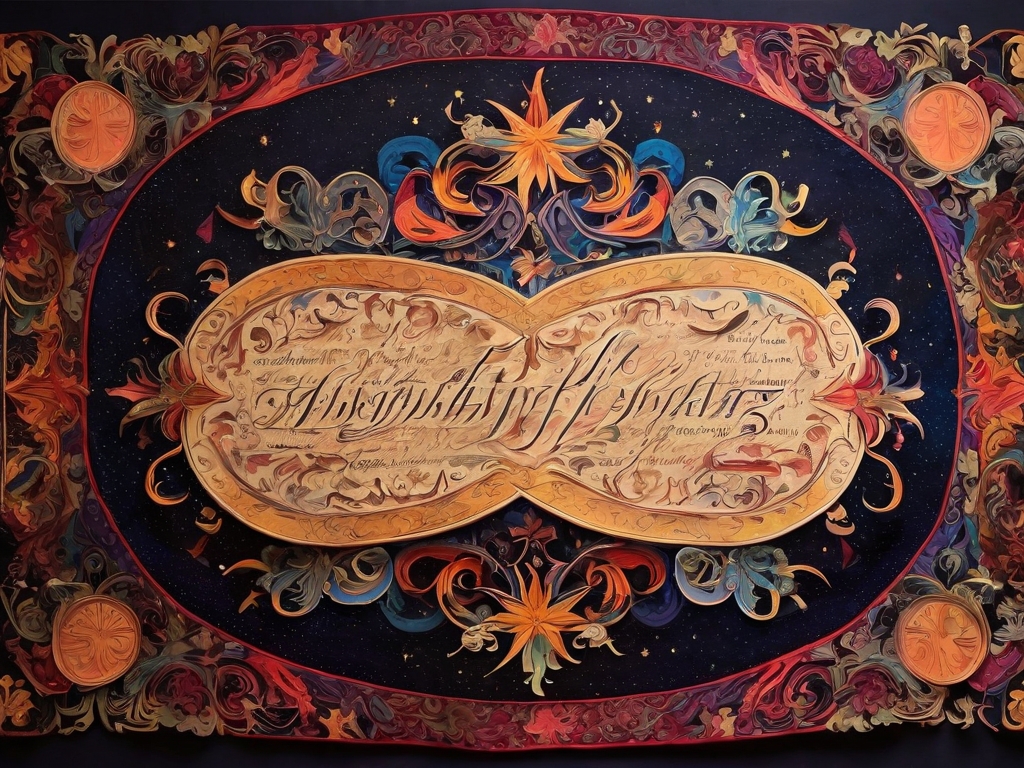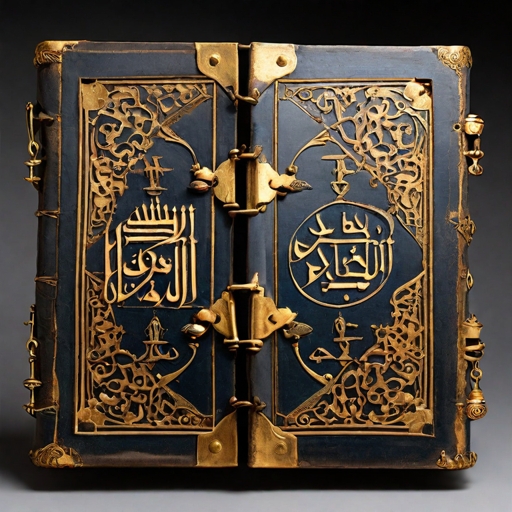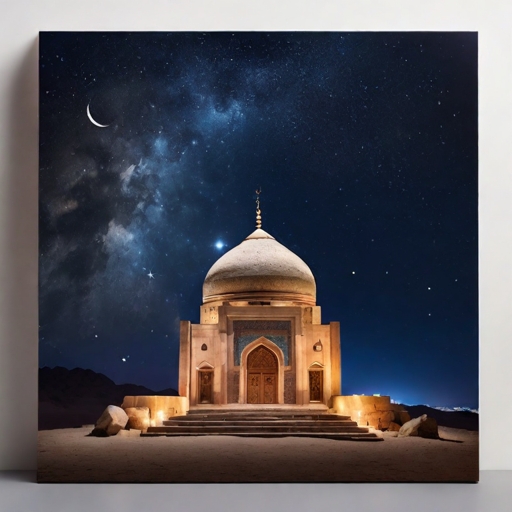Shalim "The Faith"
Called only "The Faith" by believers, "Shalim" is a term from an older Tellurian language that means, roughly "Divine Will". It is a descendant Tellurian Scriptic faith, Theist in nature and temporalist, characterized by an Originist scripture (the Transcript) and accumulated interpretive revelations (the Ahralects.)
The Voice, the seminal element in the development of the Faith, remains of uncertain gender, age, and ethnicity, possibly initially a Suf'hai mystic from the Imral-Nasirbaj community. However, extant records and timelines indicate that more than one individual must have been transcribed as the Voice over the relevant period (approximately 2073-2091 S.E.) The Transcript, the recorded revelations of Divine Will addressed to humankind, textual analysis supports the 'multiple speakers' hypothesis.
The Voice, the seminal element in the development of the Faith, remains of uncertain gender, age, and ethnicity, possibly initially a Suf'hai mystic from the Imral-Nasirbaj community. However, extant records and timelines indicate that more than one individual must have been transcribed as the Voice over the relevant period (approximately 2073-2091 S.E.) The Transcript, the recorded revelations of Divine Will addressed to humankind, textual analysis supports the 'multiple speakers' hypothesis.
Territories
While the Faith originated on Tellus at the end of the 21st Century and its central authority and most venerable institutions are located there, by the early 27th Century S.E. there were more than a dozen Communities of Faith located throughout the Diaspora, and Diasporan Faithful far outnumbered those on Tellus:
Divine Origins
The Faith emerged on Tellus in the mid-to-late 21st Century S.E. among the eastern Mediterranean and western Asian refugee communities that coalesced in the wake of the Firecracker Conflagration. Several older religions, notably Islam, Judaism, Zoroastrianism, Sikhism, and B'hai, contributed elements of theology and practice, but with the emergence of the Voice in approximately 2073, an element of prophetic tradition unified what had been loosely organized and squabbling groups into a coherentist structure that grew rapidly into millions of adherents.
The seminal event in the organization of the Faith as coherent and distinct from its various root-strands was the Reorganization by the International Resources Council that moved large numbers of the Faithful into the vast refugee camps of the Dush-Gabat Reserve. Promised aid and resettlement efforts did not materialize and the suffering was indescribable. By the Passing Forth in 2097 over thirteen million had perished in the camps from privation, predation and disease.
The Faithful formed the Miriz-ahn, a mixed spiritual/secular Council to protect and promote organization of Communes within the camps. The role of the Communes was independent of the Faith, focused on helping all of the refugee populations survive and organize resources and distribution. By the Passing-Forth there were more than forty million who identified as Faithful and the first edition of the Transcript had been published and distributed.
The seminal event in the organization of the Faith as coherent and distinct from its various root-strands was the Reorganization by the International Resources Council that moved large numbers of the Faithful into the vast refugee camps of the Dush-Gabat Reserve. Promised aid and resettlement efforts did not materialize and the suffering was indescribable. By the Passing Forth in 2097 over thirteen million had perished in the camps from privation, predation and disease.
The Faithful formed the Miriz-ahn, a mixed spiritual/secular Council to protect and promote organization of Communes within the camps. The role of the Communes was independent of the Faith, focused on helping all of the refugee populations survive and organize resources and distribution. By the Passing-Forth there were more than forty million who identified as Faithful and the first edition of the Transcript had been published and distributed.
Cosmological Views
The ordering power (often referred to as the Will) of the Divine, the All-Seeing, the Supreme, forms the pattern and channels the energy of existence among all the Ta'hri, of which the one of importance to the Faithful is the Universe of Time and Space occupied by humankind, among other forms of life. Divine Will orders the cycle of change and growth designed to allow each type of life and each living entity the choices inherent in accomplishing Divine Will. By doing so, the Faithful move through the Ta'rhi in an endless cycle of manifestation and order.
Chaos is the Ta'rhi that opposes the ordering power of the Divine, necessary to the cycle of manifestation but inimical to the forms of life in Ta'hri of Time and Space. Without chaos Divine Will would achieve perfection and all existence would end.
Chaos is the Ta'rhi that opposes the ordering power of the Divine, necessary to the cycle of manifestation but inimical to the forms of life in Ta'hri of Time and Space. Without chaos Divine Will would achieve perfection and all existence would end.
Tenets of Faith
Humankind has been given understanding of Divine Will by the Voice, through the Transcript, and is tasked with collecting the Ahralects that reveal the continuing manifestation of the Divine. No Ahralect may stand in opposition to the Transcript but Ahralects may expand, reveal, and interpret elements of the Transcript. Only the Kalifi, the Guardians of the Jewels of the Faith, may arbitrate the Archive of the Ahralects.
The Treasures of the Faith are the Transcript (sometimes referred to as the Holy Transcript) and the three Great Jewels (or Jewels of the Faith.) The Jewels are the Archive of the Ahralects, the Rolls of Kalifi, and the Fragment of the Khabva, the standing place of the Voice. The Jewels are housed at the great Shrine of Sulay-Shalimi on Tellus.
The Faithful are enjoined to pray five times daily, to observe the Haramdi fast and the Firdar feast, to engage in charity, to observe the Litany of their Community, and to worship communally at Shrine or Temple on Days of Observance, as the minimum requirements to aquire the merit needed to progress to the next Ta'rhi upon quitting this life. In addition, Faithful may aquire merit by studying the Transcript and the Ahralects, contributing to the education of the children of the Faithful, and pursuing the Ajji, the personal quest to submit to Divine Will and actualize Divine Intent.
The Treasures of the Faith are the Transcript (sometimes referred to as the Holy Transcript) and the three Great Jewels (or Jewels of the Faith.) The Jewels are the Archive of the Ahralects, the Rolls of Kalifi, and the Fragment of the Khabva, the standing place of the Voice. The Jewels are housed at the great Shrine of Sulay-Shalimi on Tellus.
The Faithful are enjoined to pray five times daily, to observe the Haramdi fast and the Firdar feast, to engage in charity, to observe the Litany of their Community, and to worship communally at Shrine or Temple on Days of Observance, as the minimum requirements to aquire the merit needed to progress to the next Ta'rhi upon quitting this life. In addition, Faithful may aquire merit by studying the Transcript and the Ahralects, contributing to the education of the children of the Faithful, and pursuing the Ajji, the personal quest to submit to Divine Will and actualize Divine Intent.
Ethics
Li-Enxi's Guide to Diasporan Faiths (6th ed., 2652 Heuristix Pub., New Canada) characterizes the Faith as a "neo-prophetic, non-proselytic, poligious, non-messianic theist faith with a syncreto-scriptic ethology and tradition."
While certain religious obligations, privileges, offices and relationships are regarded as exclusively entogenic (within and between the Faithful) the Faithful are strictly enjoined to treat infidels with fairness and kindness "as though they were siblings in Faith" in all business transactions, civil privileges, and juridical processes.
The elements of required practice and the injunction to acquire merit define ethosophical values of education, individual spiritual definition and self-transformation, charity to the less fortunate, and communitarian social structures. In Communities of the Faithful with dominant political roles the combination of this ethosophy with the rather extensive structural bureaucracy and the need to sustain it has sometimes resulted in a paradoxically rapacious economic structure.
While certain religious obligations, privileges, offices and relationships are regarded as exclusively entogenic (within and between the Faithful) the Faithful are strictly enjoined to treat infidels with fairness and kindness "as though they were siblings in Faith" in all business transactions, civil privileges, and juridical processes.
The elements of required practice and the injunction to acquire merit define ethosophical values of education, individual spiritual definition and self-transformation, charity to the less fortunate, and communitarian social structures. In Communities of the Faithful with dominant political roles the combination of this ethosophy with the rather extensive structural bureaucracy and the need to sustain it has sometimes resulted in a paradoxically rapacious economic structure.
Worship
The Faithful engage in two varieties of worship observance: Private and Communal
All worship is preceeded by ritual cleansing, the ushwud, in which the worshipper cleanses hands and arms, face and neck, and on some holy days, feet. Every worship, communal or private, begins with the call to prayer, the adhsalit, and the statement of Faith, the aimfa: "Hear, Humankind - the Divine is all that is Divine, the Voice speaks the Words of the Divine"
Communal worship is observed on holy days, and varies depending on the nature of the day. For the Firdar festival worship takes place at the home or in conjunction with the celebration of the feast, for regular holy days worship begins with the evening meal and includes an observation at the meal, and then is continued in the morning at the shrine or temple. For some festivals and special holy days a special ceremony takes place at the Shrine or Temple, with observances specific to the day.
Private worship is observed daily at the five regular prayer times, initiated by the adhsalit ("call to pray"):
N'hej - at the day's beginning
K'dhir - at mid-morning
Hurdar - at (before) the midday meal
Isn - at late afternoon or prior to evening meal
T'cza - at the day's end
Private worship begins with a ritual cleansing, the statement of Faith, one or more shakbir (blessings affirming the Faith, each beginning with "By the Jewels of the Faith, by the law of the heart, by the ear to the Voice, I serve the Divine..."
All worship is preceeded by ritual cleansing, the ushwud, in which the worshipper cleanses hands and arms, face and neck, and on some holy days, feet. Every worship, communal or private, begins with the call to prayer, the adhsalit, and the statement of Faith, the aimfa: "Hear, Humankind - the Divine is all that is Divine, the Voice speaks the Words of the Divine"
Communal worship is observed on holy days, and varies depending on the nature of the day. For the Firdar festival worship takes place at the home or in conjunction with the celebration of the feast, for regular holy days worship begins with the evening meal and includes an observation at the meal, and then is continued in the morning at the shrine or temple. For some festivals and special holy days a special ceremony takes place at the Shrine or Temple, with observances specific to the day.
Private worship is observed daily at the five regular prayer times, initiated by the adhsalit ("call to pray"):
N'hej - at the day's beginning
K'dhir - at mid-morning
Hurdar - at (before) the midday meal
Isn - at late afternoon or prior to evening meal
T'cza - at the day's end
Private worship begins with a ritual cleansing, the statement of Faith, one or more shakbir (blessings affirming the Faith, each beginning with "By the Jewels of the Faith, by the law of the heart, by the ear to the Voice, I serve the Divine..."
Priesthood
Clerical roles in the Faith are complex as they encompass civil, educational, and religious responsibilities.
The strictly religious heirarchy is headed by the Aga Qadir who is also the nominal Aga-Miram, in charge of either nominating/selecting candidates for the mirami and ratifying selections to other clerical office, in each Community of the Faithful. The holder of this office at Tellus also has the charge of ratifying the Aga-Qadir selections of other Communities. The Tellurian Aga-Qadir is a life office and chosen by the Kalifi.
The next level (and in some ways more influential) religious authority is the Kalifi, the Guardians of the Jewels on Tellus, who function as Arbiters of Voice and have the sole authority to add Ahralects to the Archive and to assign responsibility for the designation and/or ratification of kalefs as well as Litanies for new Communities of Faith. Kalefs are learned in the Transcripts and Ahralects and able to provide interpretation and guidance in orthodox doctrine descending from these sources.
Most day-to-day pastoral care of the Faithful devolves to the mirami, clerics appointed to serve, conduct prayers, and perform ceremonies at Shrines and Temples. Most Communities of the Faithful have a Table of Mirami that includes representatives of various local councils and divisions of mirami.
The amdrassi (educational institutions regulated by religious authority) have their own organizational heirarchy which varies according to the various Litanies of the Communities but generally include Pe-ahmr (Instructors) under Daktars of Faith, with administrative authority vested in Readers of various topics and disciplines, and a Muhran (Council) of Learning.
Civil authorities in Communities of the Faithful are led by a Shummam who has both administrative and religious responsibilities, and various muhran and official administrative bureaucracies defined by each Community's Litany.
The strictly religious heirarchy is headed by the Aga Qadir who is also the nominal Aga-Miram, in charge of either nominating/selecting candidates for the mirami and ratifying selections to other clerical office, in each Community of the Faithful. The holder of this office at Tellus also has the charge of ratifying the Aga-Qadir selections of other Communities. The Tellurian Aga-Qadir is a life office and chosen by the Kalifi.
The next level (and in some ways more influential) religious authority is the Kalifi, the Guardians of the Jewels on Tellus, who function as Arbiters of Voice and have the sole authority to add Ahralects to the Archive and to assign responsibility for the designation and/or ratification of kalefs as well as Litanies for new Communities of Faith. Kalefs are learned in the Transcripts and Ahralects and able to provide interpretation and guidance in orthodox doctrine descending from these sources.
Most day-to-day pastoral care of the Faithful devolves to the mirami, clerics appointed to serve, conduct prayers, and perform ceremonies at Shrines and Temples. Most Communities of the Faithful have a Table of Mirami that includes representatives of various local councils and divisions of mirami.
The amdrassi (educational institutions regulated by religious authority) have their own organizational heirarchy which varies according to the various Litanies of the Communities but generally include Pe-ahmr (Instructors) under Daktars of Faith, with administrative authority vested in Readers of various topics and disciplines, and a Muhran (Council) of Learning.
Civil authorities in Communities of the Faithful are led by a Shummam who has both administrative and religious responsibilities, and various muhran and official administrative bureaucracies defined by each Community's Litany.
Sects
The largest (mainstream) Faith is prevalent on Tellus, Ares, Al-Sulayni, Berehyn and New Canada, however there are smaller Communities of Faith representing other sects on Tellus and Ares.
In addition to the mainstream of the Faith, the largest sects include:
Shas-ahram: the largest sect and prevalent on Alamak, this sect includes mystic and supernatural elements and integrates certain numerological beliefs and practices.
Ir-dhaman: there are nearly a dozen Communities of this sect but most are small except for the Community on Tind, where it comprises the majority of the Faithful. They emphasize a mystical version of the theology that interprets supernatural elements of the Transcript and Ahralects as symbolic.
Alfraz: the smallest of the sects but with several robust Communities, including Davos and Kajam Proxen, where it is the dominant version in practice. This sect varies interpretation and observances with a focus on the ethical aspects of the Transcript and Ahralects, and accumulates their own stream of Ahralects and their own mirami (clerical establishment.)
In addition to the mainstream of the Faith, the largest sects include:
Shas-ahram: the largest sect and prevalent on Alamak, this sect includes mystic and supernatural elements and integrates certain numerological beliefs and practices.
Ir-dhaman: there are nearly a dozen Communities of this sect but most are small except for the Community on Tind, where it comprises the majority of the Faithful. They emphasize a mystical version of the theology that interprets supernatural elements of the Transcript and Ahralects as symbolic.
Alfraz: the smallest of the sects but with several robust Communities, including Davos and Kajam Proxen, where it is the dominant version in practice. This sect varies interpretation and observances with a focus on the ethical aspects of the Transcript and Ahralects, and accumulates their own stream of Ahralects and their own mirami (clerical establishment.)
Founding Date
2073 S.E. (approx.)
Type
Religious, Organised Religion
Demonym
The Faithful
Permeated Organizations
The Transcript from Al-Sulayni's Shrine of the Infinite, one of the Five Original Transcripts from Tellus' Sulay-Shalimi.
The Enjara Shrine in the Chindi foothills of Alamak Colony. It is the authoritative Shrine for the alfraz of Alamak.
Representation of the Ta'hri of Chaos, according to the Ahralect Li-Baasit 9.4.4 "where nothing is supported and nothing is nourished"







Comments